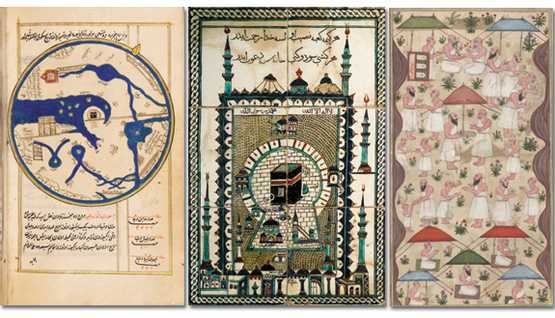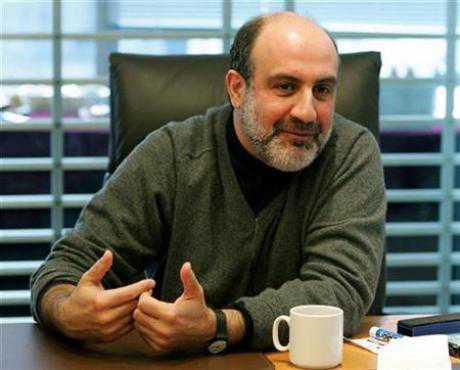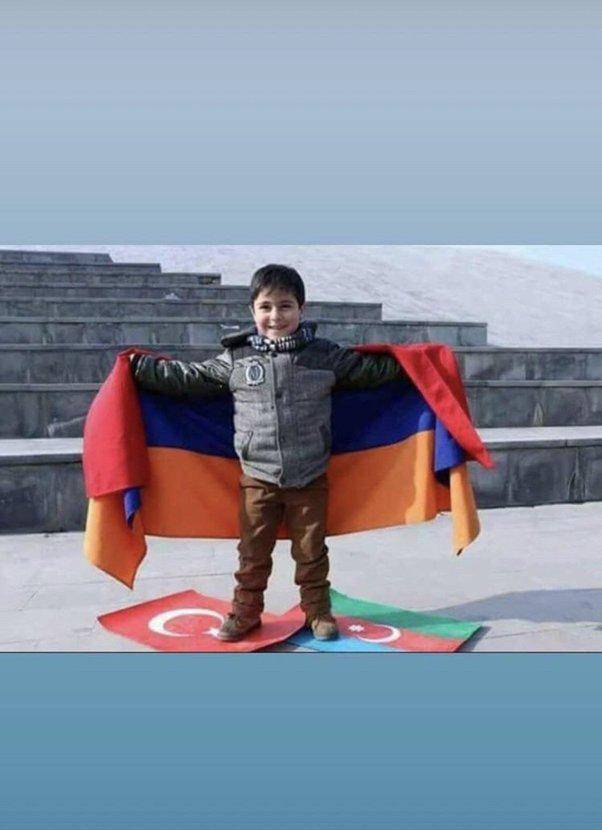News from the Clinical Congress
| AMERICAN COLLEGE OF SURGEONS 2010 Clinical Congress October 3–7, 2010 |
CONTACT: Sally Garneski 312-202-5409 or Cory Petty 312-202-5328 E-Mail: pressinquiry@facs.org |
| EMBARGOED FOR RELEASE: Monday, October 4, 12:01 a.m. (EDT) |
HONORARY FELLOWSHIP IN THE
AMERICAN COLLEGE OF SURGEONS
IS AWARDED TO SIX PROMINENT SURGEONS
WASHINGTON, DC—Honorary Fellowship in the American College of Surgeons was awarded to six prominent surgeons from Turkey, France, England, India, Brazil, and China last night during Convocation ceremonies that preceded the official opening of the College’s annual Clinical Congress. The granting of Honorary Fellowship is one of the highlights of the Clinical Congress—one of the largest international meetings of surgeons in the world. The recipients were as follows:
Mehmet A. Haberal, MD, FACS, FICS (Hon)
Professor Haberal, Ankara, Turkey, is a renowned surgeon and humanitarian. In 1975, he performed the first living-related kidney transplant in Turkey. In the ensuing years, he has distinguished himself as a surgeon, educator, author, and humanitarian. Among his many accomplishments, he established the journal Dialysis, Transplantation and Burns, organized the first Turkish Transplantation Society meeting, was founder of the Mediterranean Burns Club, established the Middle East Dialysis and Organ Transplantation Foundation, and has built 10 hospitals in Turkey. He is being awarded Honorary Fellowship in absentia due to his detention in Turkey for more than one year on allegations of anti-government activities. Professor Haberal is being recognized as an Honorary Fellow in acknowledgement of his unselfish devotion to his patients, medical science, and educational processes, all of which have led to improvement of the welfare of citizens in his country and throughout the Middle East.
Bernard Launois, MD, FACS
Professor Launois, Rennes, France, is a professor of surgery at Université de Rennes. After visiting the U.S. in the late 1960s, Professor Launois returned to France and established one of the first liver transplant centers in that country, eventually performing more than 1,200 liver replacements prior to retiring from surgical practice. He also has been widely recognized for his contributions in hepatobiliary, pancreatic, and esophageal surgery, including his work in the first randomized trials of preoperative radiotherapy for cancer of the esophagus and his first-of-its-kind report on the surgical management of duct cell carcinoma in the hepatic hilum in 1979. While serving as president of the Académie Nationale De Chirurgie, he created a paid fellowship that allows young American surgeons to spend one year in residence at the Collège de Médecine des Hôpitaux de Paris. For his contributions to the science of surgery, his work as an educator and as a prolific author, and his collaborative efforts on behalf of surgical patients around the world, Professor Launois is being awarded Honorary Fellowship in the American College of Surgeons.
Ralph John Nicholls, MA, MB, MChir (Cantab), FRCS (Hon Eng, Glas), EBSQ (Coloproctology), FRCP (Hon Lon), FASCRS (Hon)
Professor Nicholls, London, England, is an emeritus consultant surgeon, St. Mark’s Hospital, London; visiting professor of colorectal surgery, Imperial College of Science, Technology, and Medicine, London; civilian consultant advisor in general surgery to the Royal Air Force; Editor, Colorectal Disease; and Consultant Surgeon, Colorectal Eporediensis Centre, Vercelli, Italy. He is being awarded Honorary Fellowship in the American College of Surgeons because of his wide-reaching influence on the field of colon and rectal surgery. In the late 1970s and early 1980s, Professor Nicholls collaborated with Sir Alan Parks to pioneer the restorative proctocolectomy for patients with chronic ulcerative colitis and Familial Adenomatous Polyposis. For more than 30 years, he has held the position of consultant surgeon at St. Mark’s Hospital, an institution that is widely recognized as a center of groundbreaking activity in colon and rectal surgery. Professor Nicholls’ strong devotion to providing information that will further the science of surgery has led him to publish 204 peer-reviewed papers, 48 book chapters, and four surgical textbooks. His editorship of Colorectal Disease, formerly known as the International Journal for Colorectal Disease, has lasted 12 years.
Tehemton E. Udwadia, MBBS, FACS
Professor Udwadia, Mumbai, India, has made an incomparable impact on the care of surgical patients in his native country. One of his main areas of focus has been breaking through socioeconomic factors in order to provide laparoscopic surgery in a cost-effective manner to patients regardless of their ability to pay. In the early 1970s, Professor Udwadia began using and teaching the use of laparoscopes for both diagnoses and treatment, well in advance of the video endoscopic revolution in general surgery. A champion for the disadvantaged, he began traveling to rural villages throughout India to perform laparoscopic surgery and to train rural surgeons in its use. Employing reusable equipment, Professor Udwadia facilitated the performance of laparoscopic cholecystectomy at a cost of approximately $20 per patient. Also a strong proponent of the dissemination of knowledge, he serves as editor-in-chief of the Journal of Minimal Access Surgery and a former editor-in-chief of the Indian Journal of Surgery. Professor Udwadia has authored or coauthored nearly 100 articles in peer-reviewed journals, and consistently has been an in-demand guest lecturer and presenter around the world. Currently an emeritus professor of surgery at the Grant Medical College and J. J. Hospital, Mumbai, he is being awarded Honorary Fellowship in the American College of Surgeons in recognition of his humanitarian instincts and personal dedication to the care of patients regard-less of means and his efforts to transform surgical care in the second largest country in the world.
Dario Birolini, MD, FACS
An internationally renowned trauma surgeon and critical care specialist in Sao Paulo, Brazil, Professor Birolini has concentrated his efforts on specialized care of the critically ill and injured from the time he completed his surgery residency. While he has shown tireless devotion to his home country, Professor Birolini’s work has impacted trauma patients around the world, and he is widely recognized as a major force in the worldwide advancement of trauma management, emergency surgery, and critical care. For more than 25 years, Professor Birolini led “The Annual Course of Urgency Surgery” every weekend for physicians and surgeons throughout Brazil to learn about urgent and emergency care. Furthermore, he has established management algorithms and protocols for Brazil after testing them in his own hospital and reviewing the outcome database prior to proposing them as national standards. Professor Birolini’s work in furthering the care of injured patients has led to numerous awards, including the Advanced Trauma Life Support® (ATLS®) Meritorious Service Award given by the Committee on Trauma of the American College of Surgeons and being chosen to be the Scudder Orator for the 93rd Clinical Congress of the American College of Surgeons. In acknowledgment of Professor Birolini as a consummate teacher, investigator, and master surgeon, he is being awarded Honorary Fellowship in the American College of Surgeons.
William I. Wei, MBBS, FACS, FRCS (Edin, Eng), FRACS (Hon)
Known as the leading head and neck surgeon in Asia, Professor Wei, Hong Kong, China, started the first academic otolaryngology and head and neck unit in South East Asia at Queen Mary Hospital and the University of Hong Kong. His efforts have turned the unit into a large academic department which has been responsible for teaching most of the academic head and neck otolaryngologists in Asia. A dedicated researcher, Professor Wei has an international reputation for his basic and clinical research into the diagnosis and treatment of nasopharyngeal carcinoma, an often fatal disease that is prevalent in Asia. His research has led to new techniques for the reconstruction of previously nonresectable nasopharyngeal cancers using a maxillary swing approach to the central skull base. A prolific author and speaker, Professor Wei has published 200 articles in international peer-reviewed journals, has written 25 book chapters, and has made more than 150 presentations to international surgical and medical societies. Professor Wei has also worked and traveled extensively for the past 15 years to provide head and neck surgeons throughout mainland China with up-to-date education and has devoted him-self to helping patients who have undergone total laryngectomy to speak again through the New Voice Club of Hong Kong, the leader in speech rehabilitation for China. In recognition of the work he has done to greatly improve the care of patients with head and neck cancer through innovative research and his dedication to the education of patients, students, fellows, and practicing otolaryngologists, Professor Wei is being awarded Honorary Fellowship in the American College of Surgeons.
Presenting the Honorary Fellowships on behalf of the College were: Andrew L. Warshaw, MD, FACS, Boston, MA; Thomas E. Starzl, MD, PhD, FACS, Pittsburgh, PA; Stanley M. Goldberg, MD, FACS, Minneapolis, MN; John G. Hunter, MD, FACS, Portland, OR; L. D. Britt, MD, MPH, FACS, Norfolk, VA; and Richard J. Finley, MD, FACS, FRCSC, Vancouver, BC, Canada.
Fellowship in the American College of Surgeons is awarded during the ceremonies to surgeons whose education and training, professional qualifications, surgical competence, and ethical conduct have passed a rigorous evaluation and have been found to be consistent with the high standards established and demanded by the College. During the College’s Convocation ceremonies this year, 1,467 surgeons from around the world were admitted into Fellowship.
With a membership of more than 77,000, the College is the largest organization of surgeons in the world.
Sir Rickman Godlee, President of the Royal College of Surgeons of England, was awarded the first Honorary Fellowship in the College during the College’s first Convocation in 1913. Since then, 424 internationally prominent surgeons, including the six chosen this year, have been named Honorary Fellows of the American College of Surgeons.
# # #
Note: For further information, contact the College’s Office of Public Information, 633 N. Saint Clair St., Chicago, IL 60611-3211; Phone: 312-202-5328; E-mail: pressinquiry@facs.org.
=========================================================================

Ergenekon’da bugün gözaltına alınan Prof. Haberal’in çok ilgin bir geçmişi var. 10. Cumhurbaşkanımız olması direkten dönen Haberal’ın bir de Ecevit olayı var ki…
Ergenekon operasyonu kapsamında bugün gözaltına alınan Başkent üniversitesi Rektörü Prof. Dr. Mehmet Haberal kamuoyunun yakından tanıdığı bir isim. 2000 yılında ismi Cumhurbaşkanı adayları arasında geçen Haberal Ergenekon tutuklularıyla yaptığı toplantılarla da biliniyordu.
AZ DAHA CUMHURBAŞKANI OLACAKTI
9. Cumhurbaşkanı Süleyman Demirel’in görev süresinin dolduğu günlerde bugün Ergenekon terör Örgütü kapsamında ev ve işyerlerinde arama yapılan Başkent Üniversitesi Retrökü Mehmet Haberal az daha Türkiye’nin 10. Cumhurbaşkanı oluyordu. DSP, MHP ve ANAP koalisyon hükümetleri döneminde Başbakan Bülent Ecevit tarafından Haberal’ın ismi cumhurbaşkanlığına aday olarak gösterilmişti. Ancak koalisyon ortakları isim üzerinde anlaşamayınca Haberal’ın cumhurbaşkanlığı kapısı kapanmıştı.Ancak adaylığı gündemden düşse de ismi kamuoyunun sürekli gündeminde yer aldı.
BAŞKENT HASTANESİ’NDEN KAÇAN ECEVİT EVİNDE İYİLEŞTİ
Bülent Ecevit hastalanınca Başkent Hastanesi’ne yatmayı tercih etmişti. Ecevit’in burada iken sağlığının gittikçe kötüleşmesi üzerine Rahşan Ecevit eşini kaçırırcasına eve götürmüş ve Ecevit’in sağlığında kısa sürede düzelme görülmüştü. O günlerde bunun nedeni anlaşılamamıştı.
Ancak sonrasında ortaya çıkan bilgi ve belgeler Ergenekon’un bu işte parmağı olduğunu gösterir nitelikteydi. Amaç Bülent Ecevit’e “iş göremez” raporu vererek yeni oluşuma ve yeni isimlere yol açmaktı.
ERGENEKON SANIKLARIYLA TOPLANTILAR YAPMIŞ
Bülent Ecevit’e, “İş göremez” raporu vermek isteyen Başkent Üniversitesi Hastanesi’nin başhekimi Prof. Dr. Mehmet Haberal’ın ismi, Ergenekon Terör Örgütü zanlılarıyla anılıyor. Ergenekon tutuklusu Ferit İlsever, İstanbul Terörle Mücadele Şube Müdürlüğü’nde verdiği ifadede; Prof. Dr. Mehmet Haberal’ın, Ergenekon Terör Örgütü soruşturmasında tutuklanan emekli Orgeneral Şener Eruygur, emekli Orgeneral Hurşit Tolon, İşçi Partisi Genel Başkanı Doğu Perinçek ile eski Milletvekili Kamran İnan, eski Bakan Ufuk Söylemez ve ADD Yönetim Kurulu Üyesi Dursun Ali Ercan ile Milli Egemenlik Hareketi toplantısına katıldığını söylemişti. Sabah Gazetesi Yazarı Yavuz Donat’ın ifadeleriyle amaçlarından biri de “AKP karşıtlarını bir araya getirme” olan hareketin ilk toplantıları Kent Otel’de yapılıyordu. Ancak daha sonra bu toplantılara ev sahipliğini Başkent Üniversitesi Gölbaşı tesisleri ile Haberal’ın sahibi olduğu Patalya Otel yapmaya başladı.
Milliyet gazetesi, Başkent Üniversitesi Rektörü Mehmet Haberal, eski Bakanlar Kamran İnan, Ufuk Söylemez, Şükrü Sina Gürel, emekli orgeneraller Hurşit Tolon, Tuncer Kılınç gibi isimlerin de aralarında bulunduğu Diyalog Grubu’nun, Milli Egemenlik Hareketi adı altında yeni bir oluşum için nabız tutmaya başladığını, AK Parti’den ayrılan Abdüllatif Şener’in yeni oluşum arayışları içinde lider adayı olarak öne çıktığını yazmıştı.
HABERAL: AKP’NİN OYUNU DÜŞÜRECEK HER P…ŞTLUĞU YAP
Başkent Üniversitesi Rektörü Mehmet Haberal’ın televizyonu Kanal B’de seçim skandalı yaşanmıştı. Sunuculuğunu Kanal B Genel Müdürü Nahit Duru’nun yaptığı programın reklam arasında Duru’nun programa konuk olarak katılan Kemal Kılıçdaroğlu’na Mehmet Haberal’ın kendisine “Bunların (Ak Parti) oylarını azaltacak her türlü p..ştluğu yap” dediğini söylemişti. Bu sözler internete düşmüş bir çok gazetede yayınlanmış ancak Haberal’dan herhangi bir yalanlama gelmemişti.
HAZİNEDEN BAŞKENT ÜNİVERSİTESİ’NDE USÜLSÜZ KREDİLER
Mehmet Haberal’ın Başkent Üniversitesi’ne verilen kredilerde 27 milyon dolarlık usulsüzlük tespit edildi. Avrupa Sosyal Kalkınma Fonu kredisini Euro olarak geri ödeyen devlet, Haberal’dan TL tahsil edince, 27 milyon dolarlık fark Hazine’nin üstüne kaldı.
Ulusalcı çevrelere ve siyasetteki yeni oluşumlara öncülük etmesiyle gündeme gelen Prof. Dr. Mehmet Haberal’ın hızlı yükselişi, Hazine kontrolörleri raporuna yansıdı.
Üç yıl önce hazırlanan ve Aksiyon’un ele geçirdiği Hazine Müsteşarlığı’nın 26 Temmuz 2005 tarihli ve 71-8 sayılı inceleme raporuna göre, Haberal’ın sahibi ve rektörü olduğu Başkent Üniversitesi ile Hastanesi için Hazine’den verilen kredilerde usulsüzlük yapıldığı belirlendi. Raporlar, 1995-1996 yıllarında Başkent Üniversitesi’nin iki ayrı projesine (hastane ve kampus) dönemin iki bakanının onayı ile usulsüz kredi kullandırıldığını ortaya koyuyor.
(Zaman Online)





